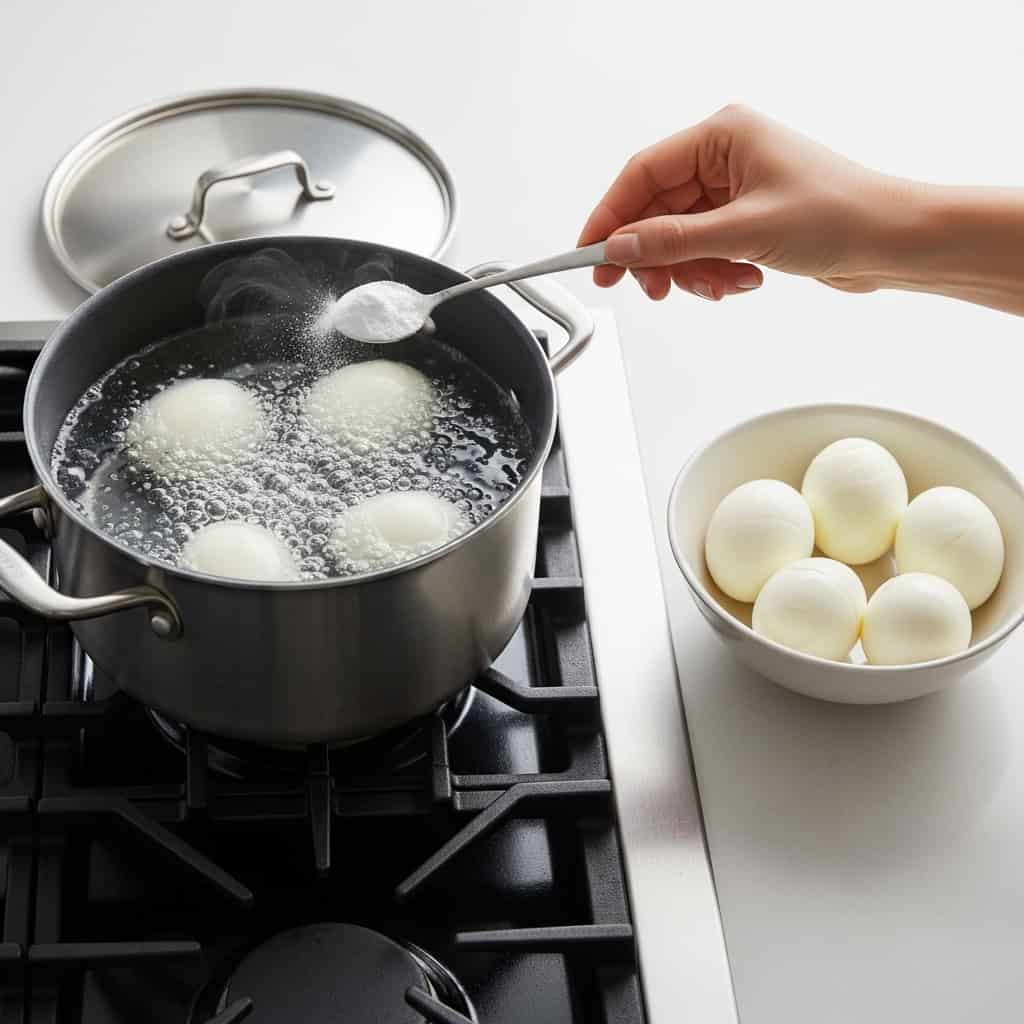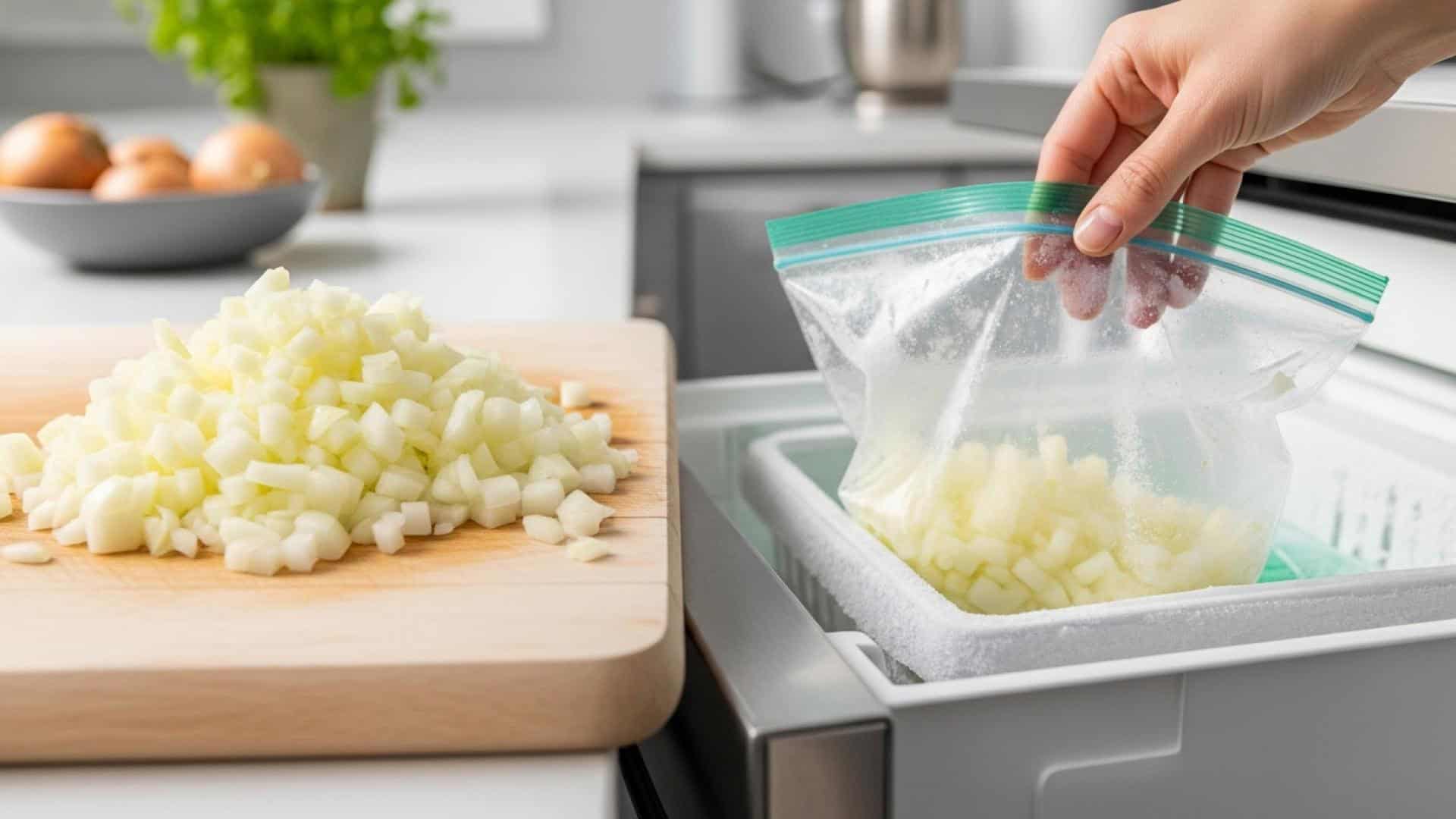10 Genius Kitchen Hacks That Actually Work
Chopping onions often leads to stinging eyes and unwanted tears due to sulfur compounds released into the air. Freezing onions for 10-15 minutes before slicing slows down the release of these compounds, significantly reducing irritation.
Unlike methods such as wearing goggles or cutting under water—which can be awkward or ineffective—the freezing trick is quick and simple. Studies and culinary experts confirm its effectiveness, making it a preferred solution in many kitchens.
Peel Garlic the Easy Way—With a Jar

If you dread peeling garlic cloves one by one, try the jar-shake method for a speedy solution. Simply place separated garlic cloves inside a clean jar, screw on the lid, and shake vigorously for about 20 seconds. The skins loosen and fall away, leaving you with clean cloves and minimal mess.
This hack saves valuable prep time compared to painstaking manual peeling. Many chefs and home cooks swear by this efficient technique. Learn more about this clever kitchen trick from Bon Appétit’s garlic peeling hack.
Revive Stale Bread with Water and Heat

Don’t toss out stale bread—restore its freshness with a simple water-and-heat trick. Lightly sprinkle or run water over the crust, then place the loaf in a preheated oven at 350°F (175°C) for 5-10 minutes. The moisture rehydrates the bread, and the heat crisps the crust, making it taste bakery-fresh again.
Unlike microwaving, which can make bread rubbery, this method preserves texture and flavor. The effectiveness of this hack is backed by food scientists and experts. For the science behind this technique, consult Cook’s Illustrated.
Prevent Boil-Overs with a Wooden Spoon

Placing a wooden spoon across the top of a boiling pot is a classic trick to prevent messy boil-overs. The spoon pops the bubbles as they reach the rim, breaking the surface tension and stopping foam from spilling over.
Unlike simply covering the pot with a lid—which can actually accelerate boil-overs—or constantly lowering the heat, the wooden spoon requires no extra attention. Kitchen experts confirm that the spoon’s material and shape make it especially effective. For a detailed explanation of how this hack works, visit The Kitchn.
Use a Muffin Tin for Perfectly Portioned Meals

Muffin tins aren’t just for cupcakes—they’re a smart tool for meal prepping, freezing leftovers, or crafting individual servings like mini frittatas and meatloafs. By dividing ingredients into the cups, you ensure uniform portions, ideal for quick grab-and-go lunches or snacks.
This method often works better than bulky meal prep containers, offering versatility and saving fridge space. Plus, muffin tins make reheating single portions easier and help reduce food waste. For more tips on portion control and meal prepping, check out this portion control guide from Eat Right.
Keep Herbs Fresh with a Damp Paper Towel

To prolong the life of fresh herbs, wrap them in a damp paper towel and place them inside a plastic bag before refrigerating. This technique maintains optimal moisture, preventing wilting and extending freshness for up to a week—much longer than simply tossing herbs in the fridge.
Unlike just refrigerating, which can cause herbs to dry out or become slimy, this method creates a gentle, humid environment. For more expert tips on keeping produce fresh, explore Food Network’s guide to storing herbs.
Grate Cold Butter for Easy Mixing

Grating cold butter with a box grater allows it to blend effortlessly into doughs and batters, ensuring even distribution for flaky pastries and tender biscuits. This method is superior to melting, which can make baked goods dense, or cubing, which may leave uneven chunks.
Baking experts recommend grated butter for recipes like scones, pie crusts, and biscuits, as it maintains the dough’s cold temperature—crucial for texture. For more expert advice on this technique, visit King Arthur Baking’s grated butter guide.
Peel Hard-Boiled Eggs with Baking Soda

Adding a teaspoon of baking soda to the water while boiling eggs raises the pH, making the shells easier to peel off cleanly. This hack outperforms common alternatives like shocking eggs in ice water or rolling them on the counter, which can be hit-or-miss. The science behind it is simple: the higher pH weakens the bond between the egg whites and the shell membrane. For a more in-depth explanation of this kitchen trick, check out Exploratorium’s guide on easy-peel eggs.
Use an Ice Cube Tray for Homemade Sauces

Freezing leftover sauces, pesto, or even broth in an ice cube tray is a clever way to portion and preserve them. Once frozen, transfer the cubes to a freezer bag for long-term storage. This method allows you to thaw only what you need, unlike jars that often require defrosting a large amount at once and may lead to waste. It’s perfect for quick weeknight meals or adding a burst of flavor to dishes. Discover more about this efficient food preservation hack from Bon Appétit’s ice cube tray guide.
Clean Cast Iron with Salt, Not Soap

To safely clean cast iron skillets without stripping their seasoning, scrub them with coarse salt and a paper towel or cloth. The salt acts as a gentle abrasive, removing stuck-on food while preserving the skillet’s nonstick patina.
Unlike soap, which can break down the seasoning layer and cause rust, this method keeps your cast iron in prime condition. Simply rinse with warm water afterward and dry thoroughly. For more expert advice on maintaining cast iron, review the Lodge Cast Iron cleaning guide.
Quick-Chill Drinks with Wet Paper Towels

If you need a cold drink fast, wrap your beverage in a wet paper towel and place it in the freezer. The damp towel speeds up heat transfer, chilling bottles or cans significantly faster than simply refrigerating or freezing them alone.
This method can cool drinks in about 15-20 minutes, perfect for last-minute gatherings or unexpected guests. Compared to waiting hours in the fridge, the wet towel hack is a true time-saver. For the science behind rapid cooling, check out Scientific American’s look at beverage cooling.






